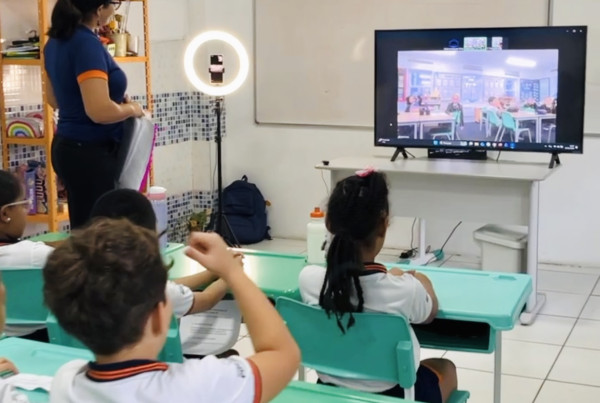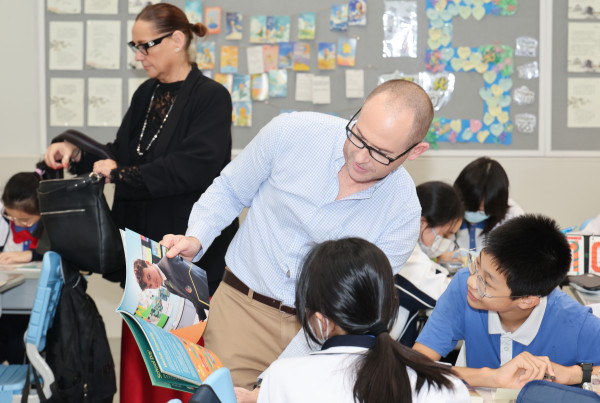The following article comes from GSA Ambassador Tania Ahmad who discusses oracy and practical solutions for the classroom.
Oracy? That’s just speaking, innit?
Well, not exactly…
The common misconception that Oracy, or the ability to orate, is solely based on improving verbal articulation, is wholly flawed. At its base, the idea of oracy is to effectively communicate; it is talking for learning as well as learning to talk. It is about creating purposeful discussion and using language as a tool for communicating ideas in a sophisticated manner. Most of our students don’t have the skill set to be able to expand and articulate themselves in a way that creates fluid discussions. Oftentimes, our students believe that listening plays no role in this idea, but no – we can only improve our speaking by, you guessed it, listening, so oracy is not just for your hushed hearers, but your sonorous speakers, too.
Yes, the verbal muscles are flexed during oracy, but what is actually key here is the cognitive understanding. Articulating ourselves unlocks the cognition levels in our brain as our mouths can only echo what our brain formulates. When we put students in situations where the time limit to think is reduced, we actually cause their cognition levels to rise as they just don’t have time to procrastinate or waffle – what you’ll often find is that answers become precise, witty and convicincing. Any fellow teachers here will know that students are the most creative at coming up with excuses – and usually this is speedy and without much thought! The reason for this is, our cognition is spiked when we are under pressure; think “fight or flight” – however because we aren’t putting our students in dangerous situations, they feel at ease to be able to think in quick conditions. You may be asking, why is this relevant? When you have class discussions, debates, even exam questions, we need to be able to equip our students with the ability to think well but, also, think quickly. Yes, there are situations where limitless time is needed; however, in many situations in day-to-day life, we need to make snappy decisions and respond instantaneously – especially when engaged in verbal conversations.
Oracy still plays a bigger role than this though. In this piece, I aim to display ways to utilise oracy in your classroom, expose its link to writing, and discuss the other strands of Oracy that go beyond your subject and classroom walls.
Practical classroom strategies:
So, you first may be wondering at this moment: what does Oracy look like in the classroom? There are a few different techniques that I have used – I can vouch for the fun and efficacy of each one! Disclaimer: your classroom may get noisy.
1. Speed Dating
A good starter activity to ease my students (or ice-breakers for teachers!) that I like to use is an activity called ‘speed dating’. I have my students sit in two rows facing each other: one side is the ‘agree’ side, and the other side is the ‘disagree’ party. I’ll have a controversial statement up on the board, usually something quite light-hearted, and the ‘agree’ side must come up with arguments for agreeing – even if they disagree! Whilst it can be very comical (i’ve had statements like the earth is flat in a room full of scientists who’ve had to come up with reasons to justify this!); however, the reason why this is so powerful is because cognitively students do not have a lot of time to think, so they find very quick, creative answers and arguments to these statements. Students on one row will move down after their discussion time is up, and a new statement will appear for each new pairing. An enjoyable and easy way to get even your most reluctant speakers to engage in verbal debate – it also encourages listening skills as students need to actively listen and respond to the arguments their partners make when agreeing/disagreeing with the statement.

2. As, Bs, and Cs
Another idea that is effective in practising the linguistic, listening and social elements of oracy, is putting your students in a trio labelling them as ‘A’, ‘B’ and ‘C’ (you can rotate those roles as time goes on) where you have an ‘agreer’, a ‘builder’ and a ‘silent summariser’ and again, place a controversial statement on the board, or a discussion statement or a piece of visual stimuli. Students, according to their role, will take their turns in opening the discussion, building by agreeing or disagreeing, and finally, summarising the key points raised. The use of the summariser particularly is a brilliant way of consolidating the discussion so students are ready to feedback whole-class; it also allows you to give your eager speakers an opportunity to listen so the more apprehensive speakers can verbally engage. In using this activity, what it really creates for students, is the ability to have a validated discussion due to the setup – once they’ve discussed with their peers and they’ve shared those thoughts, it suddenly takes away the self-doubt of, “are my ideas good enough?”, and enables students to have a foundation to feel assured in what they’ve said within their groups, resulting in them being able to share this aloud. When translating this into writing, it is a really useful tool for your reluctant writers as they have established their ideas so when they then move that discussion into writing, it’s a much more seamless and simple process. As an English teacher, I have also used the ABC activity in lessons when having my students analyse and interpret quotations, themes or characters. It is a fantastic way of effectively deploying each student in the group and ensuring that the students are developing each other just through their discussions. This strategy is also really effective in mixed ability groupings when differentiating as the roles can be assigned according to the strengths of your students. (See picture below)

3. Round table discussion
If you have a larger class and you want to use the whole class in this, you can host round table discussions. Put a piece of visual stimuli or a discussion statement in the middle of the table, and encourage discussions with the students using sentence stems and role cards, such as: instigator, prober and challenger (see below).
In doing this, we are sparking that cognition as students have to speak in role of what the statement or what their job role is; the benefit in this is that it again takes away the apprehension as the onus for students to think so broadly becomes focused on the role they are playing and so it’s a much more easier process for them. Subsequently, the content of debates becomes rich and varied as the role cards/sentence stems equip students with the knowledge of how to further their verbal skills.


The other benefits of oracy…
Oracy and writing
When looking at the link between oracy and writing, many may think they are far removed. Why? Both are polar opposites in form, but rooted in nature: communication. What we need to do is look at how these two mediums complement each other, and how they ultimately help our students – particularly EAL and those students who struggle with writing in general. Using oracy strategies as listed above, exposes the link between verbal and written communication, easing students into writing as it creates a foundation where ideas are easier to formulate through discussions, kindle creative thoughts, and it ensures students can stretch and build their ideas further – all through talk.
Oracy is only for English and Humanities subjects, right?
The illusion that Oracy is just for subjects that naturally encourage and facilitate discussions and debates, is definitely misconceived. Whilst these subjects allow for structured debates to occur, really all subjects have an element of communication – whether that is through targeted questioning or discussing concepts; we all speak in some form. What Oracy does is allow higher order discussions to occur as students have the language to frame their communication to elicit extended learning. Take your typical Math lesson – many may feel this is the antagonist to such verbose matters, however it is the perfect example. Does 0^0 = 0 or 1? This seemingly simple question sparks endless debate – with oratorical skills, our students are able to intellectually challenge, question and extend their understanding just through the linguistic techniques that Oracy teaches. The same goes for practical subjects like PE: posing the notion of whether DNA or hard work play a part in the success of athletes, is another example of how oracy can unlock the top tier of your pedagogical moments. With using some of the sentence stems exemplified, debates become sophisticated and allow room for challenge and the ability to further one’s thoughts, as opposed to simple, limited answers of ‘yes’ or ‘no’.
Social and emotional oracy
Oftentimes our students lash out and act irrationally; or, they do the opposite and become reclusive when they are facing challenges. What we need to ask ourselves is are we equipping our students with the emotional vocabulary to express themselves, healthily? Almost always, the answer is no – usually because language and communication is inherent; not something that is explicitly taught after we learn to speak our first language. When we enable our students to have an emotional vocabulary and teach them to use language as a tool to express their thoughts and feelings, we allow our students to become self-regulators of themselves and their environments. Oracy goes beyond the classroom, and when used in this way, can actually be a very powerful tool that we can use to help our students as well as empower them to help themselves.
So, without further ado…let’s keep the conversation going.





